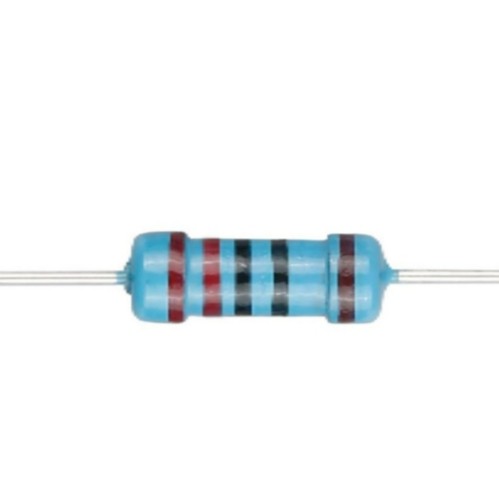

.jpg&width=620&quality=80)


.jpg&width=172&quality=80)


.jpg&width=300&quality=80)
220 register
The 220 Ohm resistor is one of the most common ones that hobbyists will come across, because it is often used with LEDs. Without a 220 Ohm resistor, simple LEDs would consume too much current and quickly burn out. We are using the resistor to limit the current that the LED can use.
( No Reviews )
₹ 4 ₹6
6
Seller Electro Boat
Tags 220 S2 register




COD

Cancelable till shipped

7 Days Returnable
Product Details :
| Made In : | India |
Add FAQ
It seems you meant to refer to a 220Ω (Ohms) resistor. This is a common resistor value in electronic circuits.
Key Characteristics of a 220Ω Resistor:
- Resistance Value: The "220" refers to the resistance value, which is 220 ohms (Ω). Ohms are the unit of measurement for electrical resistance, and this resistor limits the current in a circuit by offering 220 ohms of resistance.
- Power Rating: Resistors also have a power rating, typically in watts (W), such as 0.25W (1/4 watt), 0.5W (1/2 watt), or 1W, etc. The power rating indicates how much energy the resistor can safely dissipate without being damaged by heat. This information would be found in the resistor's specifications.
- Tolerance: Resistors also have a tolerance value, which indicates the precision of the resistance value. A common tolerance for general-purpose resistors is ±5%, meaning the actual resistance could be 220Ω ±5% (between 209Ω and 231Ω).
Common Uses for a 220Ω Resistor:
-
Current Limiting:
- One of the most common uses for a 220Ω resistor is to limit current in LED circuits. It is typically placed in series with an LED to prevent too much current from flowing through the LED, thus protecting it from damage.
-
Voltage Divider:
- The 220Ω resistor can be part of a voltage divider circuit where the resistance determines the output voltage based on the input voltage.
-
Signal Conditioning:
- It can be used to adjust signal levels in audio or digital circuits.
-
Pull-Down/Pull-Up Resistors:
- In digital circuits, resistors like the 220Ω might be used for setting default states (pull-down or pull-up) for logic inputs.
-
General Resistor Applications:
- Used in various applications to control current flow, reduce voltage, or adjust impedance.
Example:
- LED Circuit: If you're using a 5V power supply and a typical LED that requires about 20mA, a 220Ω resistor is often used to limit the current to the appropriate level to prevent the LED from burning out.
- Using Ohm's Law: R=VI=5V−2V0.02A=150ΩR = rac{V}{I} = rac{5V - 2V}{0.02A} = 150Ω Here, you would use a slightly higher resistance value (like 220Ω) to ensure the current does not exceed 20mA.

No FAQs Found
0 Reviews For this Product









2.jpeg&width=225&quality=80)
2.jpeg&width=225&quality=80)
.jpeg&width=225&quality=80)

